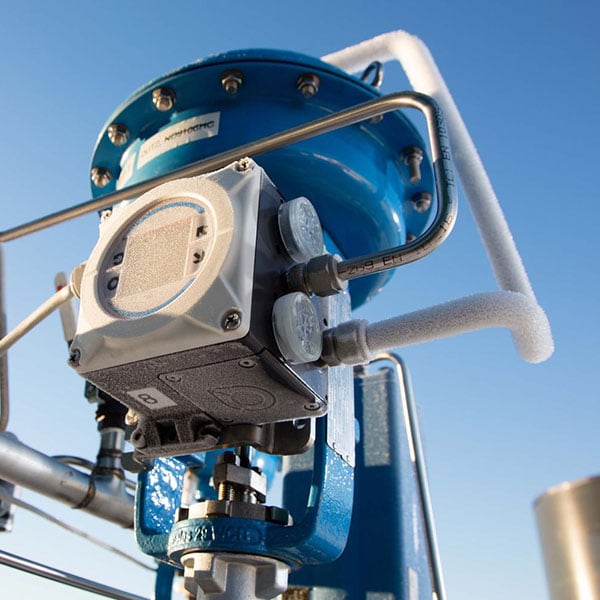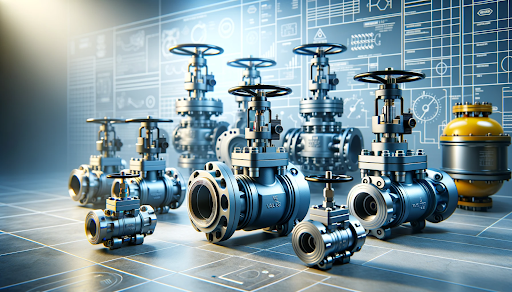Enhancing Functional Performance with Advanced Control Valves
Enhancing Functional Performance with Advanced Control Valves
Blog Article

Maximize Power Financial Savings and Convenience With Advanced Building Automation Controls
In the realm of modern style and facility management, the integration of advanced structure automation controls stands as an essential improvement. By harnessing the power of automation, buildings can adjust, react, and advance in means that were once unthinkable.
Power Performance Perks
Energy performance advantages can significantly minimize power consumption and functional expenses in buildings. Energy-efficient systems, such as sophisticated structure automation controls, can enhance the use of sources like lighting, heating, and cooling, leading to reduced energy expenses over time.
Furthermore, enhanced energy efficiency can prolong the lifespan of structure tools and systems. By operating extra effectively, a/c systems, lighting fixture, and various other building elements experience less damage, leading to decreased upkeep and replacement costs. In addition, energy-efficient structures commonly command higher home worths and rental rates, giving long-lasting financial benefits to owners.
Furthermore, energy performance can improve resident convenience and efficiency. Effectively controlled interior atmospheres with optimum illumination and thermal conditions produce a more enjoyable and favorable work space, bring about enhanced employee complete satisfaction and performance. On the whole, the energy efficiency advantages related to advanced structure automation controls are complex, encompassing cost savings, ecological stewardship, and occupant wellness.
Improved Convenience Control
Enhancing comfort control in structure atmospheres needs an innovative integration of innovative automation systems for ideal passenger health. By making use of advanced building automation controls, facilities can tailor the indoor environment to meet the particular requirements and choices of passengers. These systems make it possible for specific regulation of lights, air flow, and temperature level, creating a comfortable and productive ambience. Resident fulfillment and efficiency are carefully linked to thermal convenience, making it vital to have systems in area that can adjust to altering conditions in real-time.
Enhanced comfort control surpasses fundamental temperature modifications. It includes attributes such as tailored setups, occupancy sensing units, and all-natural light usage to produce a receptive and dynamic environment. By including these sophisticated controls, buildings can not just improve comfort however also enhance energy effectiveness by optimizing system procedures based upon actual tenancy and usage patterns. Eventually, prioritizing passenger convenience with innovative automation systems causes an extra satisfying and healthier indoor setting.
Operational Effectiveness Improvements

Moreover, the application of real-time surveillance and analytics tools allows structure operators to identify energy inadequacies and operational anomalies immediately. By continually keeping an eye on power usage patterns and system performance metrics, modifications can be made in real-time to maximize power consumption and guarantee peak functional performance. control valves. Additionally, integrating demand reaction approaches into building automation controls can additionally boost functional effectiveness by dynamically changing power use based upon grid problems and pricing signals
Indoor Climate Optimization
Effective indoor climate optimization is a basic facet of structure automation controls, ensuring residents' comfort and wellness while taking full advantage of energy cost savings. By making use of innovative sensing units and controls, constructing automation systems can continually change and check temperature level, moisture levels, air quality, and click to investigate ventilation to create an optimal interior setting. Keeping constant and comfortable problems not only enhances passenger fulfillment but likewise improves performance and overall wellness.
Indoor climate optimization likewise plays a crucial role in power effectiveness. By fine-tuning air conditioning, heating, and ventilation systems based upon real-time information and occupancy patterns, constructing automation controls can dramatically lower power usage - control valves. For example, executing approaches such as demand-controlled air flow and thermal zoning can assist lessen energy waste while making sure that each location of the structure obtains the required conditioning.

Sustainable Environment Production
Building automation regulates not just maximize indoor environment problems for power efficiency and owner comfort yet also lay the foundation for producing a lasting environment via critical management of sources and systems. By integrating innovative building automation modern technologies, such as sensing units, actuators, and smart software, centers can change and monitor energy use in real-time to lessen waste and decrease their carbon impact. These systems enable predictive upkeep, determining prospective problems before they rise and maximizing equipment performance to enhance long life and effectiveness.
Moreover, sustainable environment creation prolongs past energy administration to include water preservation, waste decrease, and indoor air top quality renovation. Structure automation controls can regulate water usage, spot leaks, and make certain proper waste disposal methods, adding to general sustainability efforts. In addition, by regulating and monitoring air flow and filtering systems, these innovations boost occupant health and wellness and efficiency while reducing power usage connected with heating and cooling procedures.
Verdict
In verdict, progressed building automation regulates offer significant advantages in regards to energy cost savings, convenience control, operational efficiency, interior climate optimization, and creating a lasting setting. By carrying out these controls, structures can achieve optimal performance while decreasing power intake and improving resident convenience. It is noticeable that using advanced important source automation modern technology is essential in enhancing structure performance and producing an extra sustainable future.
Power effectiveness benefits can substantially decrease energy consumption and operational expenses in buildings. Overall, the energy performance benefits linked with sophisticated structure automation controls are complex, including cost savings, ecological stewardship, and passenger well-being.
Additionally, integrating need response strategies right into building automation controls can additionally enhance operational performance by dynamically readjusting energy usage based on grid conditions and rates signals.
Building automation regulates not only enhance indoor visit their website climate problems for energy performance and owner comfort however likewise lay the foundation for developing a sustainable atmosphere via critical management of sources and systems.In conclusion, progressed building automation regulates deal substantial benefits in terms of energy cost savings, convenience control, operational effectiveness, indoor climate optimization, and creating a sustainable atmosphere.
Report this page